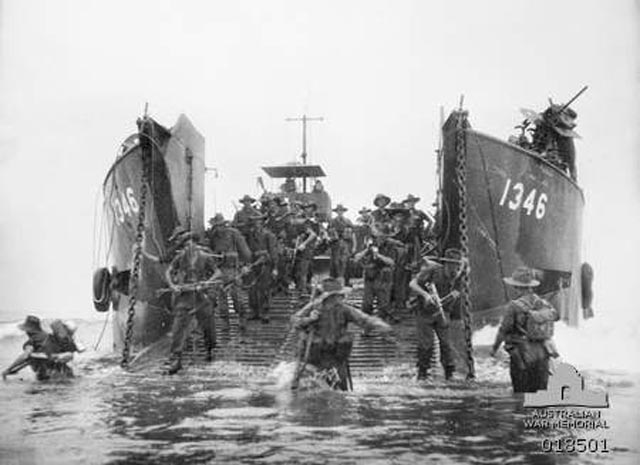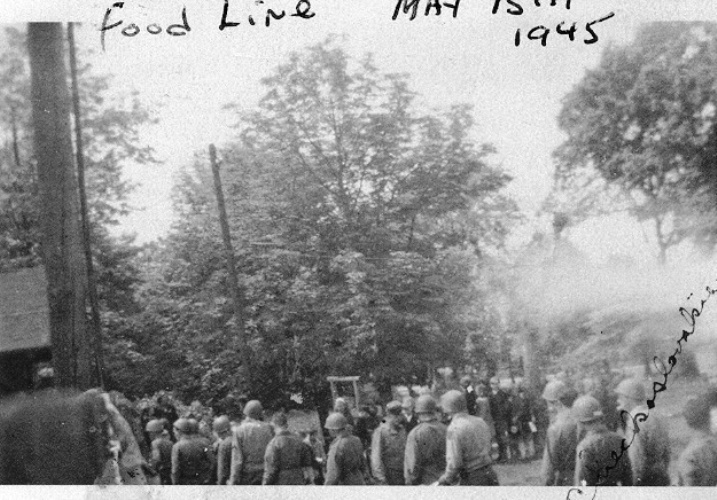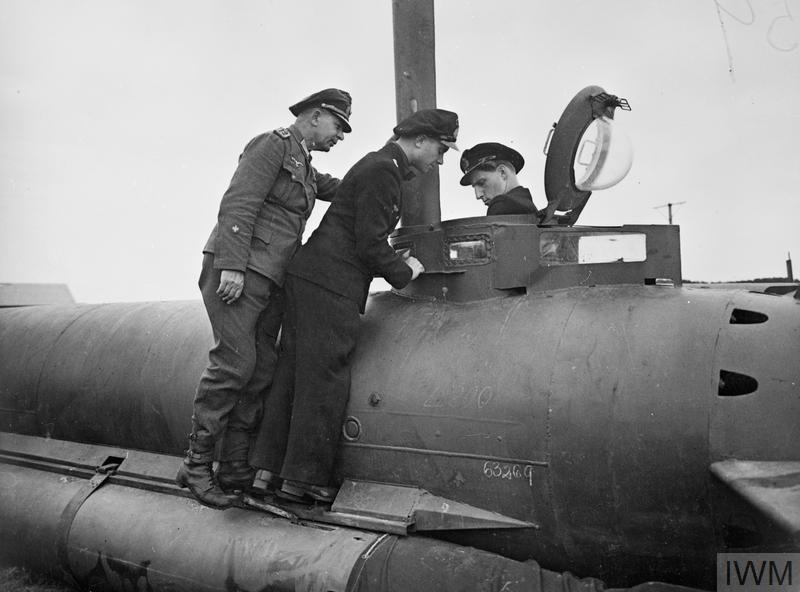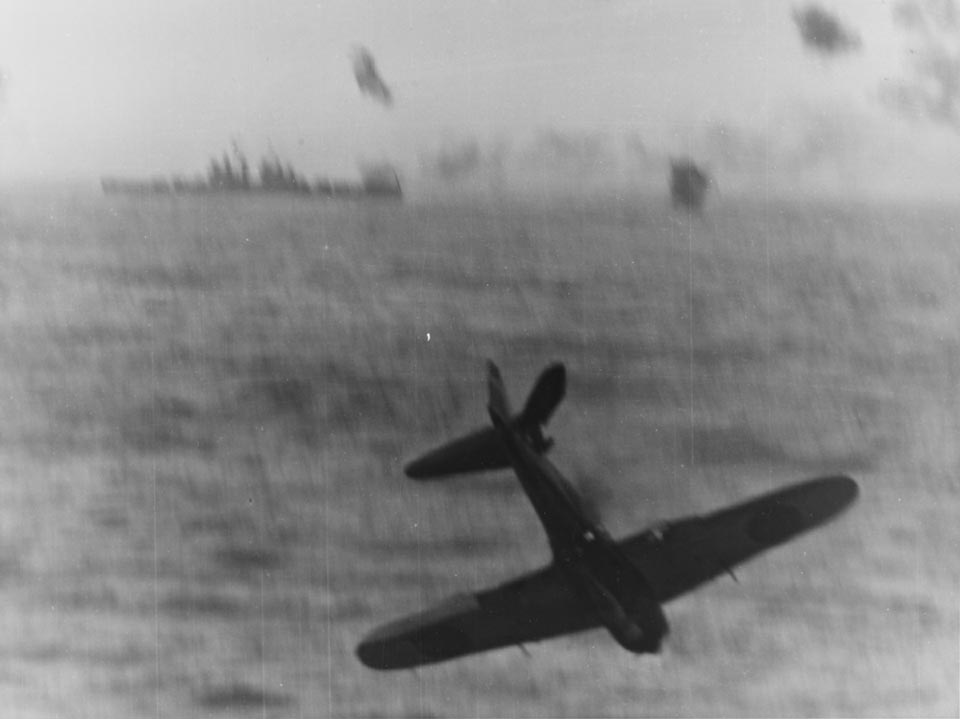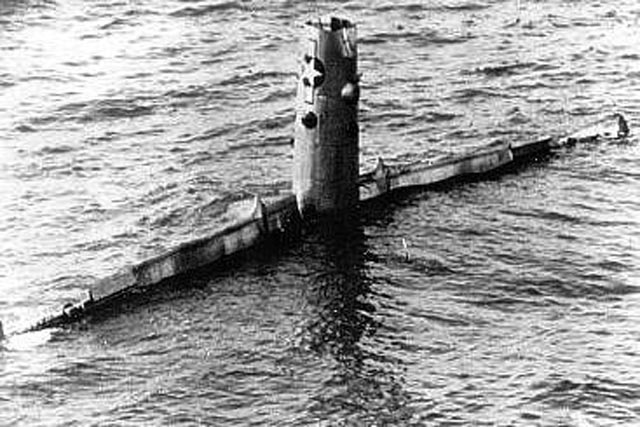Air Operations, CBI
CHINA- 1 308th Heavy Bomb Group B-24 and 2 14th Air Force P-51s attack 3 bridges.
- 20 341st Medium Bomb Group B-25s attack troops, horses, road and rail targets, and targets of opportunity at 16 locations.
- 150 fighter-bombers attack bridges and transporation targets at Liping, Tungkow, and across southern and eastern China.
Air Operations, East Indies
- FEAF B-24s and 42nd Medium Bomb Group B-25s attack the Kudat and Miri airfields on Borneo, and support Australian Army ground forces on Tarakan Island.
- V Bomber Command B-24s attack Shinchiku.
- V Bomber Command B-25s attack an alcohol plant at Shoka.
Air Operations, Japan
13 28th Composite Bomb Group B-24s attack the Kataoka and Kashiwabara areas. 1 B-24 damaged by ground fire force-lands in the USSR.
[Air Operations, Pacific
There is a daylight fire raid on Nagoya. In order to further undermine Japanes morale and industrial output, following the severe psychological blow of the German collapse, the 21st Bomber Command(?) of the US 20th Air Force, launches daylight saturation bombing attacks on 4 cities, Nagoya, Yokohama, Osaka and Kobe, between now and June 15. A total of 4,700 sorties drop 16,647 tons of napalm and oil bombs and wipe out 36 sq km of built-up area. 77 B29s are lost during this period.
[Air Operations, Philippines
V Fighter Command P-38s attack troops and artillery positions on Luzon. Due to a marked decrease in air-support requirements in the Visayan Islands, Marine Air Group 14, based at Samar's Guinan airfield, terminates combat operations pending its transfer to the 2nd Marine Aircraft Wing on Okinawa.
[Air Operations, Ryukyus
- US Navy and Marine Corps aircraft support US 10th Army ground forces on Okinawa.
- VF-40 F6Fs down 3 D3A 'Val' dive bombers 70 miles from Task Force 58 at 1900 hours.
- VMF-224 VMF-322, and VMF-323 F4Us down 5 Japanese aircraft off Okinawa at 1930 hours.
Austria, Home Front
(when?)The Republic of Austria is proclaimed, restoring the situation which existed before the Anschluss.
[Burma
The 26th Indian Div, advancing from Rangoon toward Prome, joins up with the 20th Indian Div as it comes south.
[Burma, Politics
With the defeat of the Japanese Army in Burma essentially complete, the Burmese nationalist leader, Aung Sun, gives full cooperation to the Allied war effort.
Eastern Front
In Yugoslavia, near Slovenigradesk, 150,000 German soldiers surrender to the Yugoslav and Russian forces. The German Army Group Center, 1,200,000 men strong, has completely disintegrated. All who can have managed to surrender to the Americans; the rest are in the hands of the Russians.
YUGOSLAVIAThe troops of Army Group E
150,000 in total
surrender at Slovenigradesk.
[Indian Ocean
(when?)After an attempt to reach the Nicobars on the 10th and 11th the Japanese cruiser Haguro and a destroyer try once more to get through with supplies for the Japanese garrisons on the islands. British battleship and escort carrier forces try to make an interception, but it is achieved by a destroyer force, five strong, commanded by Capt Sir John Power. They make their attacks on the Japanese ships in the Malacca Straits area during the night, and in a classically delivered attack from all directions Haguro is sunk by the destroyers' torpedoes. This is the last surface action of the war involving major warships.
[Okinawa
In the sector of the III Amphibious Corps, a Marine unit has to withdraw from Sugar Loaf Hill on account of the deadly Japanese fire. In the US XXIV Corps sector, the 305th Inf of the 77th Div makes some very slight progress, but after the hard fighting of the past days is reduced to a quarter of its effectives. The 1st Marine Div advances along the valley of the Wana River, west of Shuri, ceaselessly battered by enemy gunfire. The Japanese launch many counter-attacks by night, but are driven off.
[Pacific
- British ships and planes attack Japanese positions on the Andaman Islands.
- The US submarine Hammerhead (SS-364) sinks the Singapore-bound Japanese transport Tottori Maru (5973t) in the Gulf of Siam.
- The US submarine Sea Poacher (SS-406) sinks the Japanese army luggers No.56 Ume Maru and Fukumo Maru northeast of Hokkaido.
- Mines sink the Japanese merchant vessels Miyajima Maru and Mishima Maru (1934t) near Kobe, Japan.
Philippines
On Luzon the US XI Corps prepares to resume the attack against the Ipo dam, north of Manila.
Sharp fighting on Mindanao; units of the US 24th Div advance from Davao to the northeast to make contact with the Filipino guerrillas. Mopping up continues in the valley of the Talomo River.
[Images from May 15, 1945
|
|
|
|
|
|
